Burmese pythons in Florida: Here's everything you need to know about the invasive snakes
First identified in Everglades National Park in 2000, the Burmese python may be the most destructive foreign animal in the park's history.
The Southeast Asian apex predator quickly put a stranglehold on Florida's wildlife. Pythons can swim, burrow and climb trees and they eat almost anything. They've contributed to the decline of raccoons, opossums, bobcats, foxes, and marsh and cottontail rabbits, according to a 2012 study.
According to USGS, the Burmese python is now distributed across more than a thousand square miles of southern Florida, including all of Everglades National Park and areas to the north including Big Cypress National Preserve and Collier-Seminole State Forest. A number of Burmese pythons have been found in the Florida Keys, but there is not yet confirmation of a breeding population in the Keys.
Burmese pythons can grow to more than 18 feet and weigh more than 200 pounds.
Here's everything to know about these invasive snakes in Florida:
Scout pythons target massive females
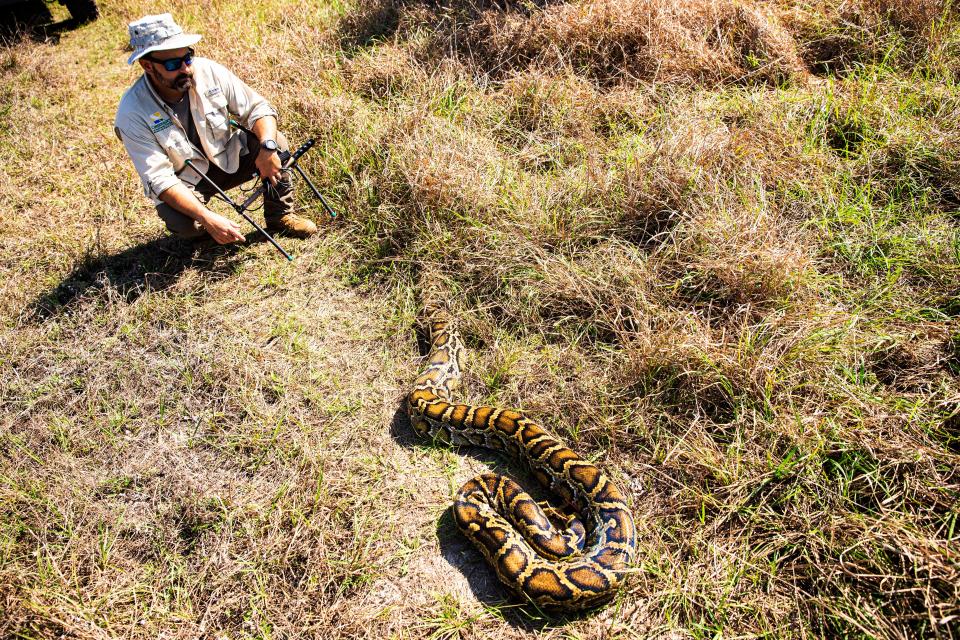
Biologists have for 10 years released and tracked proven male breeders in an attempt to remove the biggest of breeding female Burmese pythons from the Collier County landscape.
'Guts and gonads' necropsy produces 69 Burmese python eggs, deer hooves
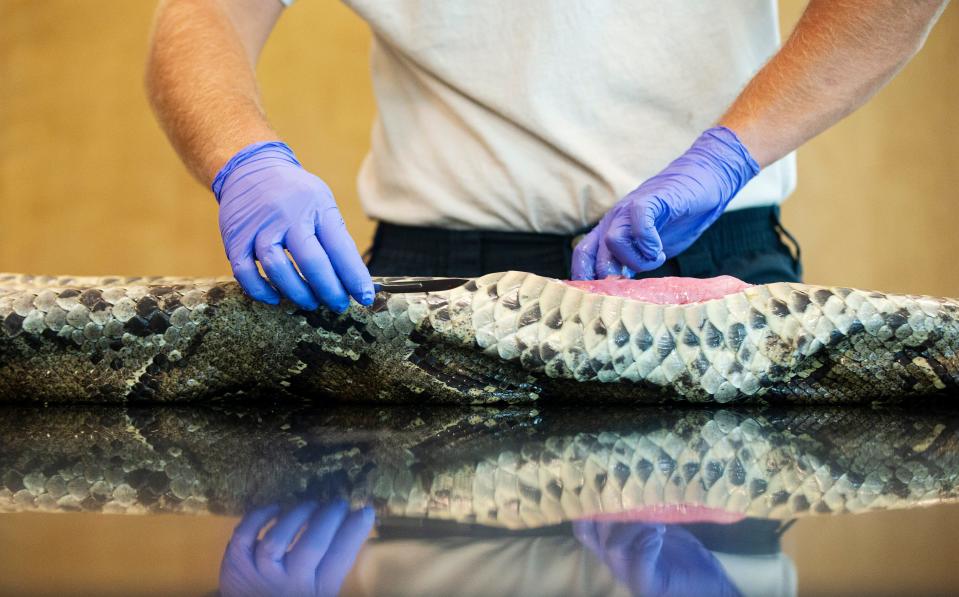
Invasive Burmese pythons eat a wide range of mammals and likely prey on the Florida panther. Necropsies help build data.
How to humanely kill a Burmese python and what to know about the invasive snakes
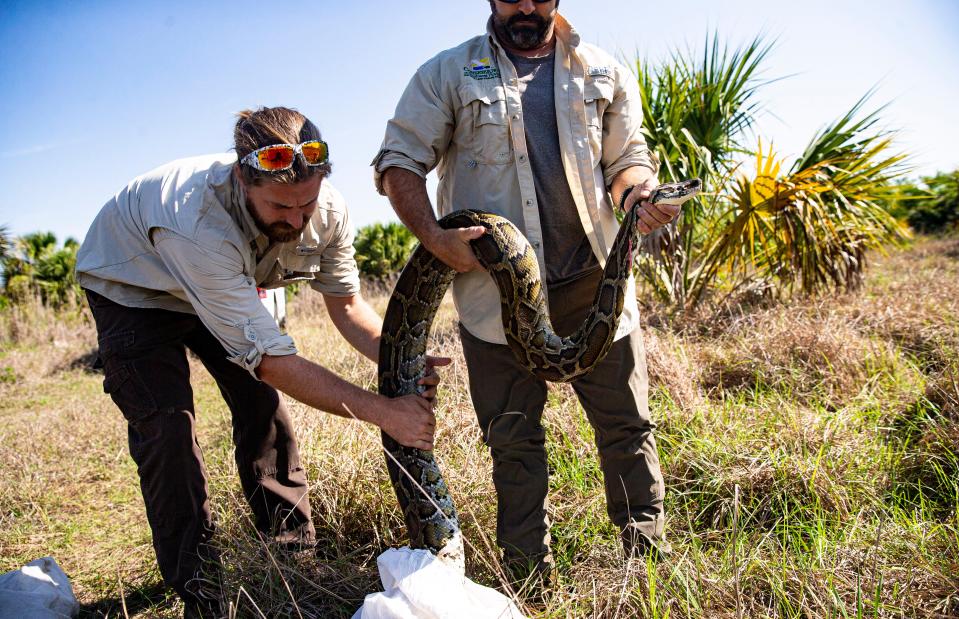
They don't belong here, and they wreak havoc on South Florida's wildlife, much of which is listed as threatened or endangered. Burmese pythons disrupt the natural balance that evolved here over thousands of years.
The best Burmese python photos from our archives
Our visual journalists have covered the challenges of the invasive Burmese python for almost a decade.
See the best photos | View the best galleries
How many wild critters does a python eat to grow to 13 feet?
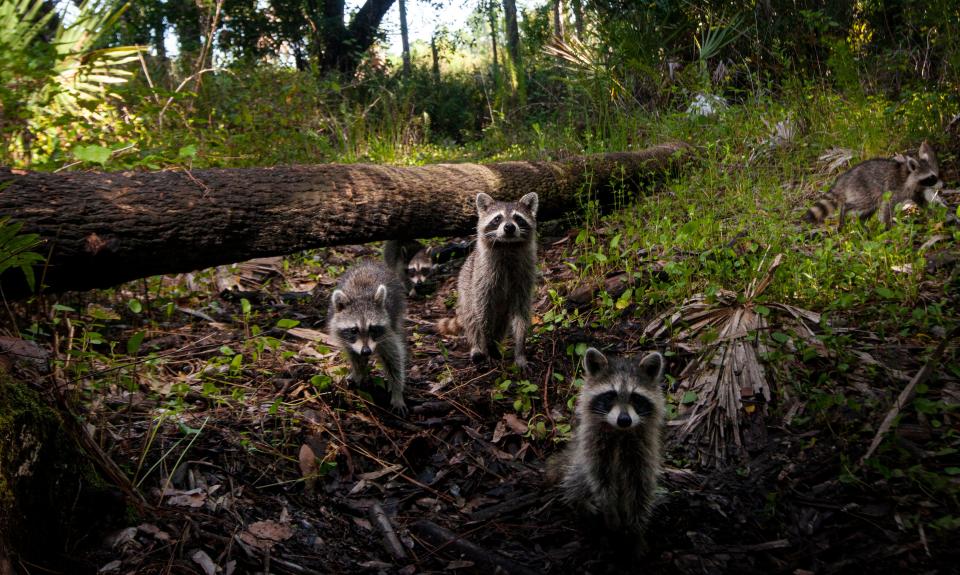
In a hypothetical exercise, Everglades National Park herpetologist Skip Snow and University of Alabama biology Professor Stephen M. Secor estimate how much pythons must eat to grow to be 13 feet long, which takes between five and seven years.
Could these 7 deadly exotic animals get a foothold in Florida?
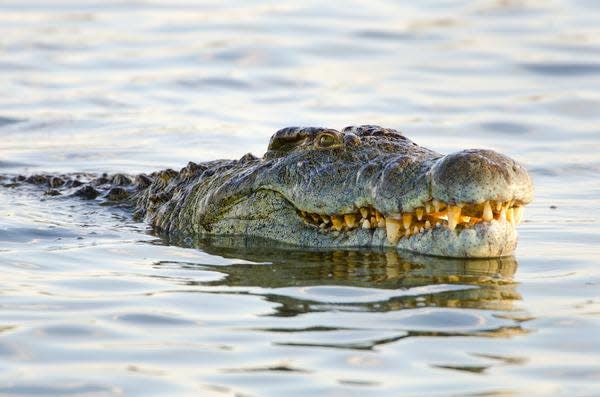
Most invasive species aren’t likely to kill you. But these seven species are among the world's most dangerous. Could they find a home in Florida?
Burmese pythons in Florida caught on video
Pythons caught on video include a record catch and a hunting adventure.
Burmese pythons stick to South Florida but can they slither up North?
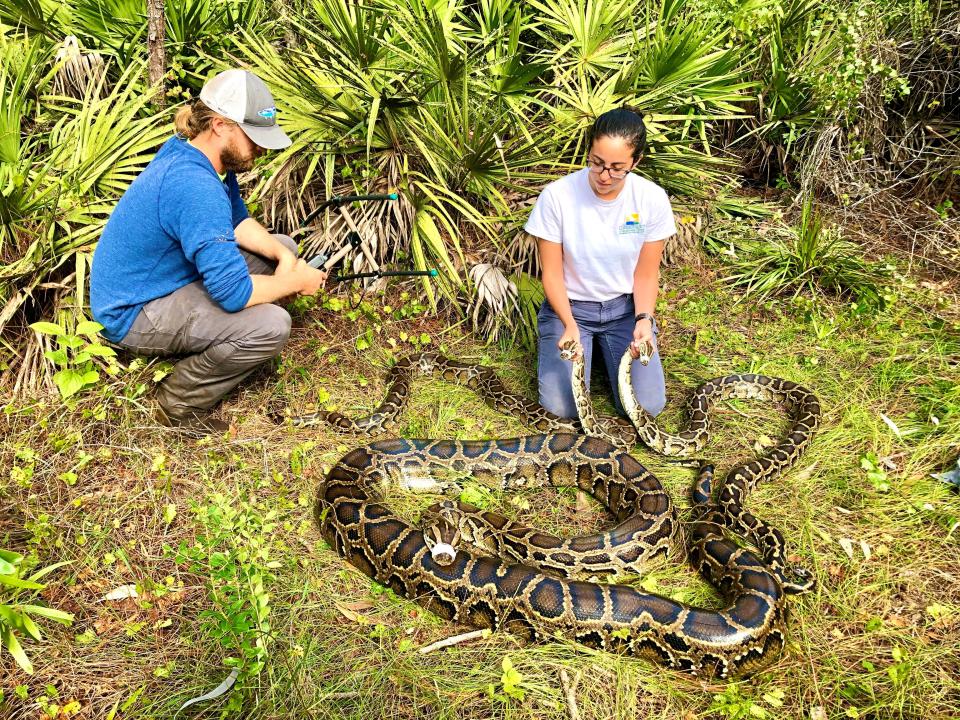
Is it possible for Burmese pythons to slither out of the swamps of South Florida toward the top of the state, possibly even to outside states, and dominate other areas?
Python Challenge 2023 will draw hunters from across country
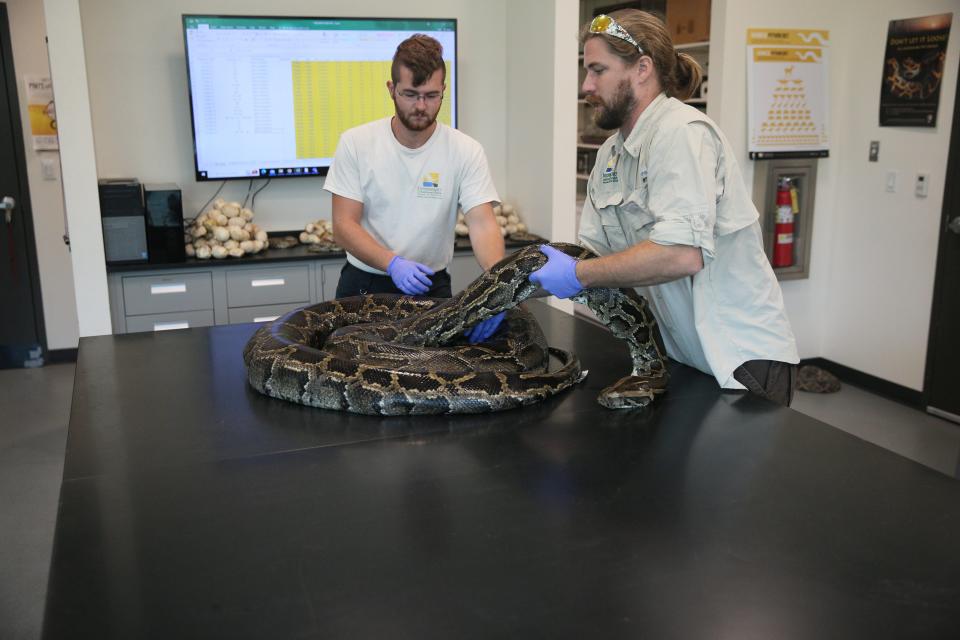
FWC says the 2022 hunt removed 231 pythons from the Everglades, with nearly 1,000 people from 32 states and even Latvia taking part in the 10-day hunt. This year's hunt will take place from Aug. 4 through Aug. 13, and there are categories for professional and amateur hunters.
Florida's native snakes can be mistaken for Burmese pythons
![A cottonmouth whips its tongue in its exhibit on Thursday, May 2, 2019, at the Birmingham Zoo in Birmingham, Alabama. [Photo by Laura Chramer]](https://s.yimg.com/ny/api/res/1.2/UszbegW3BvQSjFRROdOUng--/YXBwaWQ9aGlnaGxhbmRlcjt3PTk2MDtoPTY0MA--/https://media.zenfs.com/en/naples-daily-news/778d6ab9539f2fc64466c6c3288a9f89)
While most people realize that any 18-foot, 200-pound snake living wild in Florida is a Burmese python, smaller pythons can resemble native snakes.
10 takeaways from a decade of Burmese python research
They lay eggs by the bucketful, they swim and they eat almost anything that moves: How Burmese pythons have made themselves at home in Florida.
Scientists have learned a lot about the invasive snakes, but questions remain.
Real-time battles with the snake that's swallowing the Everglades

A 21st-century 'Silent Spring': How imported Burmese pythons wrecked the Everglades and what science is trying to do about it.
Pythons are eating their way through Everglades food chain
The impact of the Burmese python on the Everglades is devastating.
This article originally appeared on Naples Daily News: Pythons in FL: Everything to know about the invasive snake species

